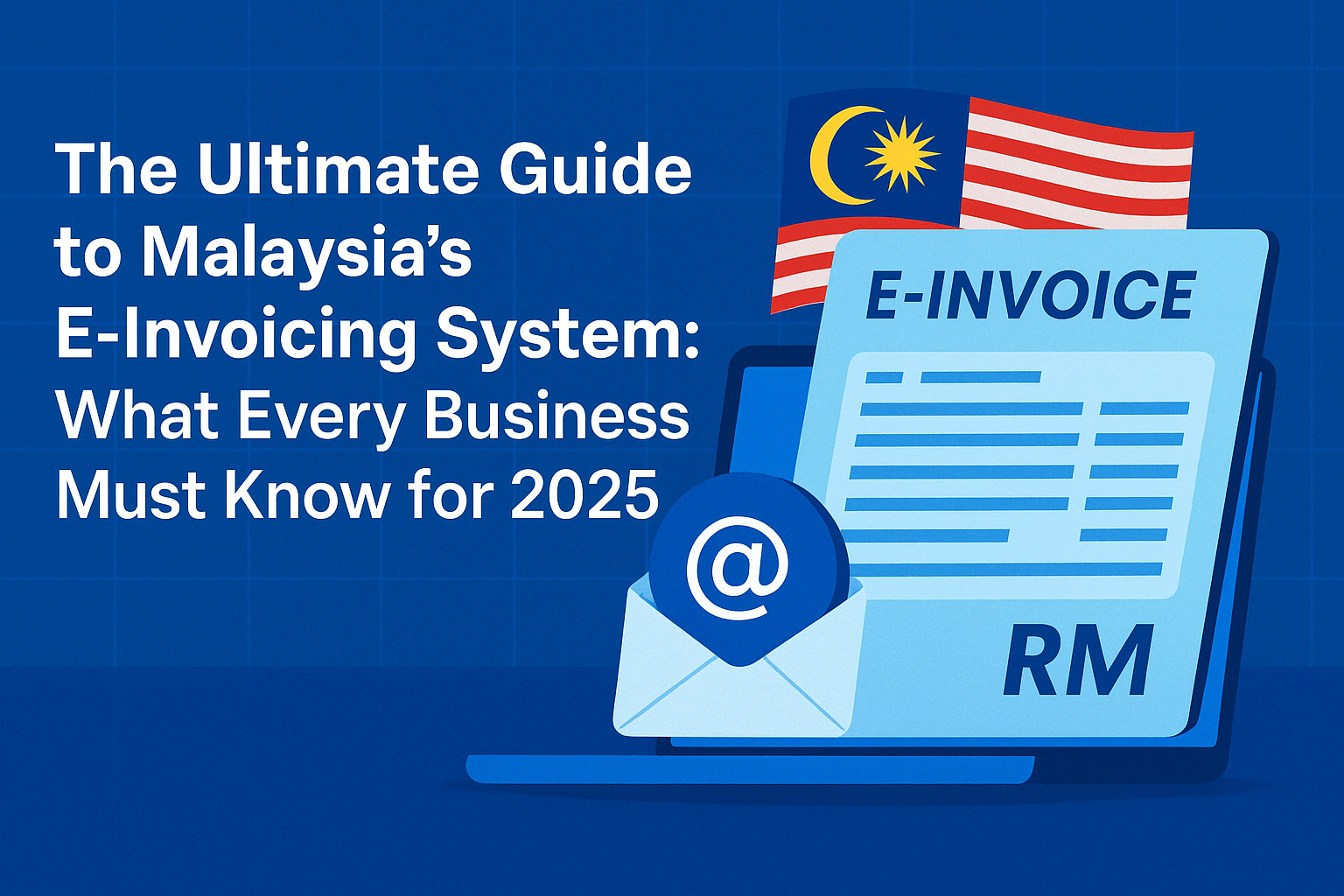As Malaysia moves towards a full-scale digital economy, the mandatory implementation of the national e-invoicing system is transforming how businesses transact. Governed by the Inland Revenue Board of Malaysia (LHDN), this new framework is designed to enhance tax administration efficiency, and compliance is no longer optional.
For many business owners, this transition can seem daunting. What exactly is an e-invoice? When does my business need to comply? How does the process work? This detailed guide, based on the latest official LHDN guidelines (Version 4.5, published July 7, 2025), will walk you through everything you need to know.
1. What is an E-Invoice? (And What It Is Not)
It is crucial to understand that an e-invoice is not simply a PDF or digital version of a traditional invoice sent via email.
An e-invoice is a
digital representation of a transaction between a supplier and a buyer, created in a specific format (XML or JSON) that can be automatically processed by computer systems. This file is transmitted directly to LHDN’s
MyInvois System for near real-time validation before it is sent to your customer. Once validated, it becomes the official proof of income for the supplier and proof of expense for the buyer.
This system replaces traditional paper or electronic documents like invoices, credit notes, debit notes, and refund notes.
2. The Implementation Timeline: When Must You Comply?
The rollout of e-invoicing is being done in phases, based on a company’s annual turnover or revenue as stated in their audited financial statements for the financial year 2022.
-
Phase 1 (August 1, 2024): Taxpayers with annual turnover > RM100 million.
-
Phase 2 (January 1, 2025): Taxpayers with annual turnover > RM25 million and up to RM100 million.
-
Phase 3 (July 1, 2025): Taxpayers with annual turnover > RM5 million and up to RM25 million.
-
Phase 4 (January 1, 2026): Taxpayers with annual turnover > RM1 million and up to RM5 million.
-
Phase 5 (July 1, 2026): All remaining taxpayers, including those with turnover up to RM1 million.
Once your implementation date is set based on your 2022 revenue, any subsequent changes in your turnover will not alter your mandatory start date.
3. How Does It Work? The E-Invoice Workflow
The process involves several key steps from creation to storage:
-
Issuance & Submission: When a sale occurs, the supplier creates the e-invoice in the required XML or JSON format and submits it to LHDN’s MyInvois System for validation.
-
Validation: LHDN’s system performs near real-time checks to ensure the e-invoice meets all necessary standards. If successful, the e-invoice is assigned a Unique Identifier Number.
-
Notification: LHDN will then notify both the supplier and the buyer (via email or through the portal) that the e-invoice has been validated.
- Sharing: The supplier is then obliged to share the validated e-invoice with the buyer. This can be the raw data file or a visual representation (like a PDF) which must contain a QR code for verification.
- Rejection or Cancellation: The buyer has 72 hours from the time of validation to request a rejection if there are errors. The supplier can also cancel the e-invoice within this 72-hour window. After this period, any adjustments must be made by issuing a new credit note, debit note, or refund note e-invoice.
-
Storage: All validated e-invoices are stored securely in LHDN’s database.
4. Two Ways to Comply: MyInvois Portal vs. API
LHDN provides two main methods for businesses to issue e-invoices:
- MyInvois Portal: This is a free, web-based portal hosted by LHDN. It’s ideal for micro, small, and medium enterprises (MSMEs) or businesses with a low volume of transactions. You can create e-invoices one by one using an online form or upload a batch of invoices using a pre-defined Excel template.
- API (Application Programming Interface): This method allows for direct integration between your company’s existing ERP or accounting system and LHDN’s MyInvois System. It’s designed for larger businesses with a high volume of transactions, as it automates the submission process. This requires an initial investment in technology and system adjustments.
5. Handling Special Cases: Consolidated and Self-Billed E-Invoices
The LHDN guidelines provide specific rules for common business scenarios:
- Consolidated E-Invoice: For transactions with customers who do not require an individual e-invoice (e.g., retail B2C sales), suppliers are allowed to issue a normal receipt at the point of sale. Then, they can aggregate all these transactions into a single
monthly consolidated e-invoice and submit it to LHDN within seven days after the month’s end.
-
Self-Billed E-Invoice: In certain situations where the supplier is unable to issue an e-invoice (e.g., payments to freelance agents, purchases from foreign suppliers), the buyer is required to issue a self-billed e-invoice to document the expense for tax purposes.
How SMONE Can Guide Your E-Invoice Transition
The transition to mandatory e-invoicing is a significant operational shift that requires careful planning and a robust digital foundation. At SMONE, our Cloud Accounting & Digitalization service is designed to make this process seamless for you.
We help you:
- Choose the right software: We guide you in selecting Malaysia-focused cloud accounting platforms like Bukku and Financio that are e-invoice ready.
- Clean up your data: We ensure your customer, supplier, and product data is accurate and contains all the mandatory fields required for e-invoicing.
- Streamline your workflow: We help you design efficient processes for both standard and special e-invoicing scenarios, like employee claims and self-billing.
Don’t wait until your deadline is near. Contact us today for a consultation and let us help you build a compliant, efficient, and future-ready business.
(Disclaimer)
This article is for general informational purposes and is based on the LHDN e-Invoice Guideline (Version 4.5) and Specific Guideline (Version 4.3) dated July 7, 2025. It does not constitute legal or tax advice. Please consult with a qualified professional for advice tailored to your specific situation.


